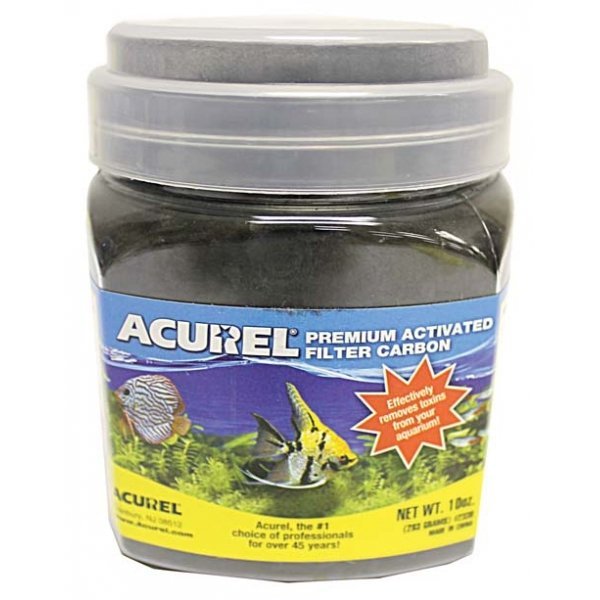 Aquarium Activated Carbon
Aquarium Activated Carbon
- What is activated carbon?
- What is the best kind to buy?
- How long does it last?
- Should I use it in my aquarium?
What is Activated Carbon?
Activated carbon is carbon that has been treated with oxygen in order to open up millions of tiny pores between the carbon atoms. It can have anywhere from 300 to 2,000 square meters of surface area per gram, or 116 to 750 square feet per ounce. Activated carbon absorbs various substances, from gases and liquids. The substances attach to the pores in the carbon by chemical reaction. When certain chemicals in your aquarium pass next to the carbon surface, they attach to that surface and are trapped.
Carbon can be made from animal, mineral, or plant-based materials such as bituminous coal, lignite coal, various woods, coconut shells, peat, and animal bones. The types of activated carbon include granular, palletized, and powdered.
What is the Best Activated Carbon to Buy?
- Do not buy a carbon filter media just based on surface area claims. Read the label and determine the type of base material. If the package doesn't state the base material, e-mail or call the manufacturer.
- If the label gives key specifications (porosity, density, ash, and phosphate content) then the supplier likely has nothing to hide and the carbon is likely a good one.
- If the carbon boasts no phosphate, then the supplier is either lying or doesn't know any better.
- Compare weight and volume. The less weight for a given volume, the greater the porosity and the better the carbon, all-else being equal. You can usually do this without buying the product first. After buying the product, this parameter will be reflected by the carbon's ability to float and fizz.
- Some physical characteristics that should be evident before buying should be considered. Particle size should be about pinhead. Powdered carbons offer no real advantage and are difficult to handle. Large particle sizes become impenetrable by water and so only the outer 1-2 mm of the particles are absorbent, making as little as 20% of the carbon useful. Spherical shape is ideal hydro-dynamically for unimpeded water flow and inability to pack, and is therefore superior to random granular shapes.
How long does it last?
- As a general rule of thumb, it is better to use less carbon and change it more often. Try 100 ml per 30 gallons with monthly changes. Another general rule is, the lighter the weight of the carbon for a given volume, the better.
- When treating fish with medications, the carbon should be removed from the filter. After treatment, the carbon can be put back in to help remove the medications although water changes should be performed in addition.
- The use of activated carbon with live plants is greatly debated. Generally, planted-tank aquarists do not use activated carbon for fear of losing trace elements needed by the plants.
Should I use Activated Carbon in my Aquarium
- Yes, because the use of activated carbon can increase phosphate levels in your aquarium. These increased levels can lead to algae growth. All carbons are organic in source, therefore rich in phosphates. Acid-washed carbons will release less phosphate than others and are usually more expensive, since they have had much of their ash and phosphate washed out. Ash is important because it is responsible for "pH shock". Some carbons can increase pH to over 10 in a very short time.
- An acid-washed carbon will barely increase pH to 7 over several days. Carbons that do not alter pH are usually the same carbons that will not leave much phosphate.
- All carbons should be rinsed well before being placed in the filter system. A yellowish tint in your water can indicate the need for carbon replacement. It can lose a large percentage of its effectiveness in two to four weeks. Organic materials and bacterial slime coat the surface blocking access to the inner pores. Rinsing the carbon between changes can extend its useful life.
Copyright 1999-2025 GregRobert Enterprises, LLC.
Family Owned / Family Values

